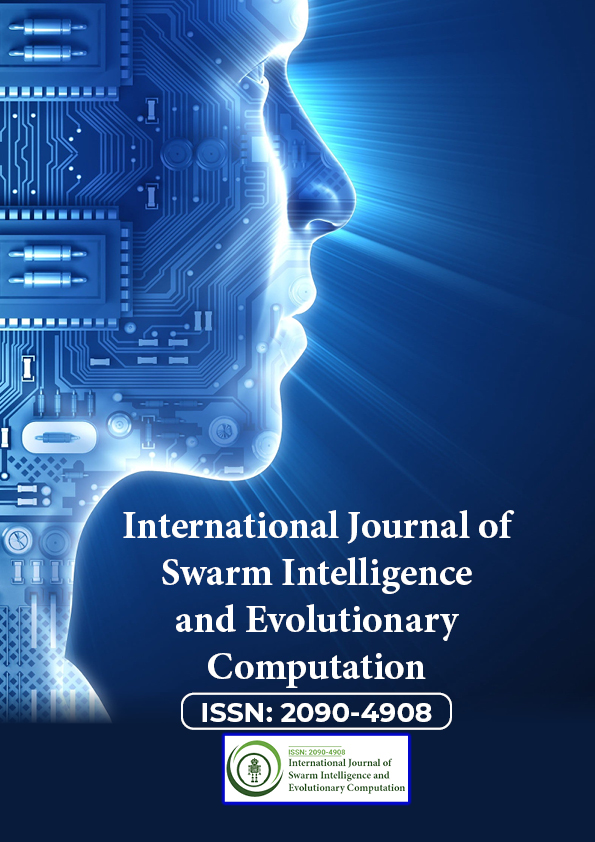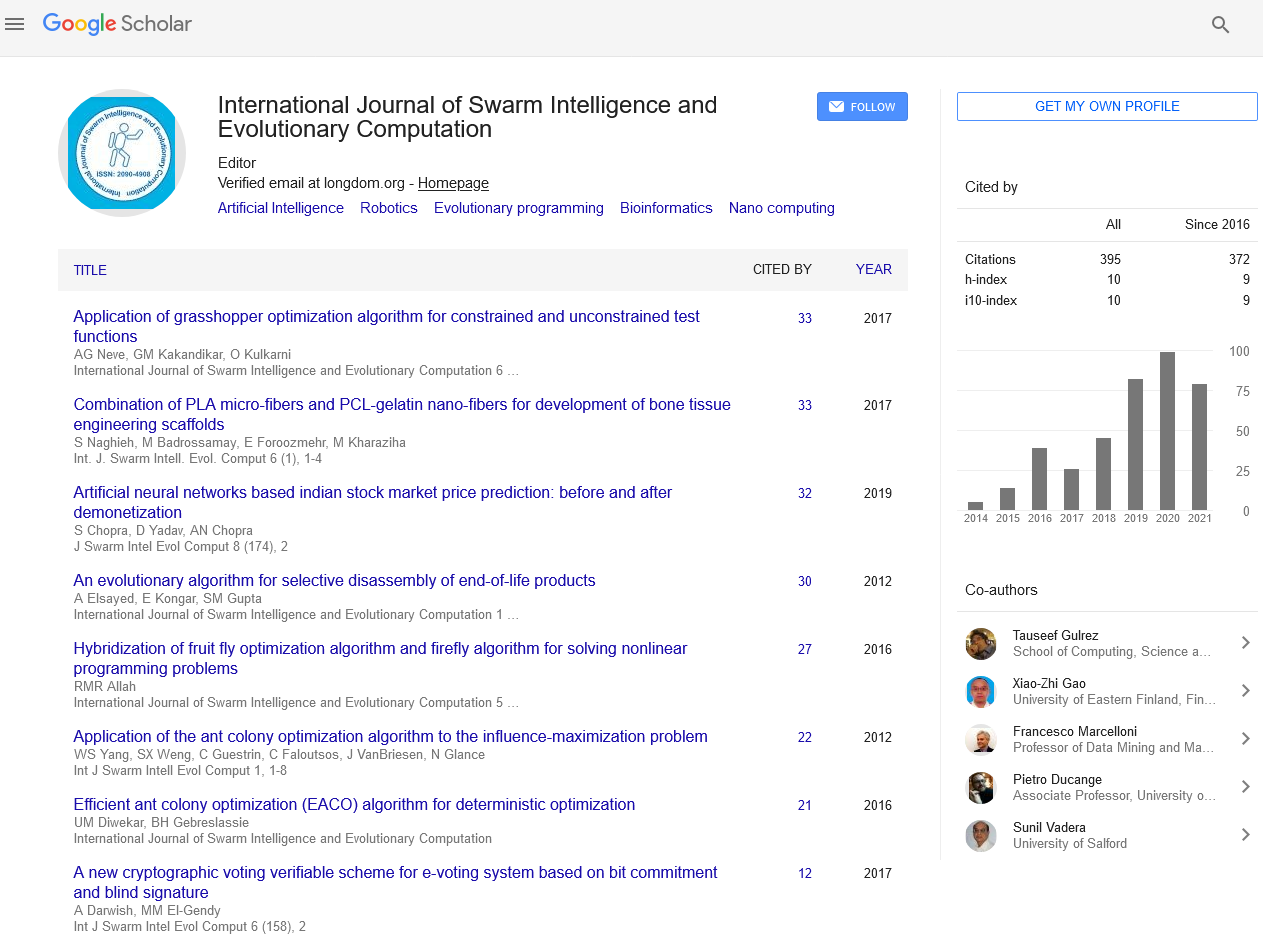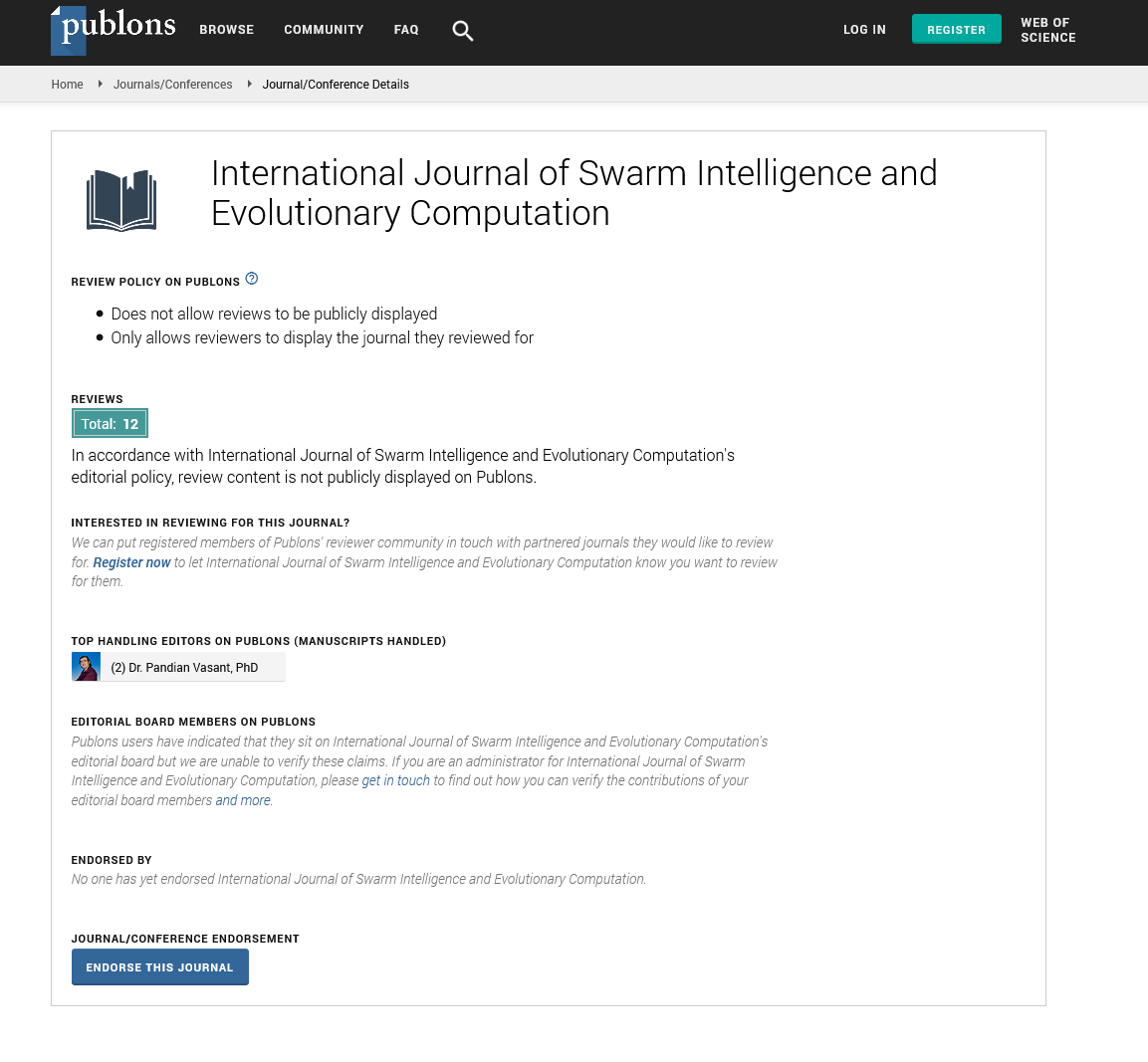Indexed In
- Genamics JournalSeek
- RefSeek
- Hamdard University
- EBSCO A-Z
- OCLC- WorldCat
- Publons
- Euro Pub
- Google Scholar
Useful Links
Share This Page
Journal Flyer

Open Access Journals
- Agri and Aquaculture
- Biochemistry
- Bioinformatics & Systems Biology
- Business & Management
- Chemistry
- Clinical Sciences
- Engineering
- Food & Nutrition
- General Science
- Genetics & Molecular Biology
- Immunology & Microbiology
- Medical Sciences
- Neuroscience & Psychology
- Nursing & Health Care
- Pharmaceutical Sciences
Perspective - (2025) Volume 14, Issue 2
The Bio-Inspired Symphony: How Nature's Swarms Fuel Innovation in Artificial Intelligence Design
Adrián Lauren*Received: 18-Apr-2025, Manuscript No. SIEC-25-28706; , Pre QC No. SIEC-25-28706 (PQ); , QC No. SIEC-25-28706; , Manuscript No. SIEC-25-28706 (R); , DOI: 10.35248/2090-4908.24.14.423
Abstract
The field of Swarm Intelligence is deeply rooted in the observation and emulation of collective behaviors found throughout the natural world. From the intricate coordination of ant colonies building complex nests to the synchronized movements of bird flocks navigating vast distances, nature provides a rich tapestry of examples where simple individual agents, following basic rules, give rise to remarkably sophisticated global intelligence. This bio-inspired approach has not only led to the development of powerful optimization algorithms like ACO and PSO but also continues to serve as a wellspring of inspiration for the design of novel Artificial Intelligence architectures and problem-solving paradigms.
Description
The field of Swarm Intelligence is deeply rooted in the observation and emulation of collective behaviors found throughout the natural world. From the intricate coordination of ant colonies building complex nests to the synchronized movements of bird flocks navigating vast distances, nature provides a rich tapestry of examples where simple individual agents, following basic rules, give rise to remarkably sophisticated global intelligence. This bio-inspired approach has not only led to the development of powerful optimization algorithms like ACO and PSO but also continues to serve as a wellspring of inspiration for the design of novel Artificial Intelligence architectures and problem-solving paradigms.
Consider the decentralized communication strategies employed by social insects. Ants communicate indirectly through pheromone trails, modifying their environment to influence the behavior of others. Bees perform intricate dances to convey information about food sources. These indirect and local communication mechanisms offer valuable insights for designing robust and scalable multi-agent AI systems that can operate effectively in environments where centralized communication might be unreliable or inefficient. The concept of stigmergy, where agents interact through modifications of their shared environment, provides a powerful alternative to explicit communication, allowing for complex coordination to emerge without the need for direct messaging. This principle is being explored in areas like distributed robotic construction and collaborative information retrieval.
In the pursuit of designing intelligent systems, researchers have increasingly turned to nature for inspiration. The study of natural phenomena, particularly the behavior of swarms in animals like ants, bees, and birds, has led to the development of Swarm Intelligence (SI) in Artificial Intelligence (AI). These natural swarms exhibit remarkable efficiency and adaptability through decentralized cooperation, where each individual agent follows simple rules yet contributes to complex, coordinated group behavior. This phenomenon has prompted a new wave of innovation in AI design, where bio-inspired principles are used to create algorithms and architectures that mimic nature’s swarming behaviors. By harnessing the power of these natural systems, scientists and engineers are developing more resilient, scalable, and adaptive AI systems. This essay explores how nature’s swarms have inspired AI design, the core principles behind bio-inspired swarm intelligence, and how these principles are being applied to solve real-world problems.
Furthermore, the fault tolerance and resilience exhibited by natural swarms offer crucial lessons for designing robust AI systems. If a few individuals within a large ant colony or fish school fail, the overall functionality of the swarm is typically not severely compromised. This inherent redundancy and adaptability are highly desirable in AI systems that need to operate reliably in unpredictable or failure-prone environments. By emulating the decentralized control and distributed information processing of natural swarms, we can build AI systems that are less susceptible to single points of failure and more capable of adapting to changing conditions. The study of how natural swarms achieve consensus and make collective decisions, even with incomplete or noisy information, also provides valuable insights for designing more robust and reliable AI decision-making algorithms.
The bio-inspired approach inherent in Swarm Intelligence continues to fuel innovation in AI by offering a rich source of inspiration for designing intelligent systems that are not only effective but also robust, adaptable, and scalable, mirroring the remarkable capabilities observed in the swarms of the natural world.
Citation: Lauren A (2025). Bio-Inspired Symphony: How Nature's Swarms Fuel Innovation in Artificial Intelligence Design. Int J Swarm Evol Comput. 14:423
Copyright: © 2025 Lauren A. This is an open-access article distributed under the terms of the Creative Commons Attribution License, which permits unrestricted use, distribution and reproduction in any medium, provided the original author and source are credited


